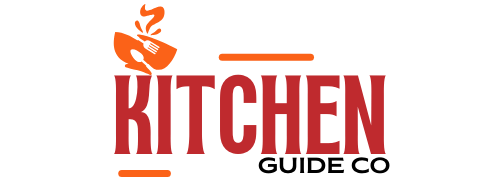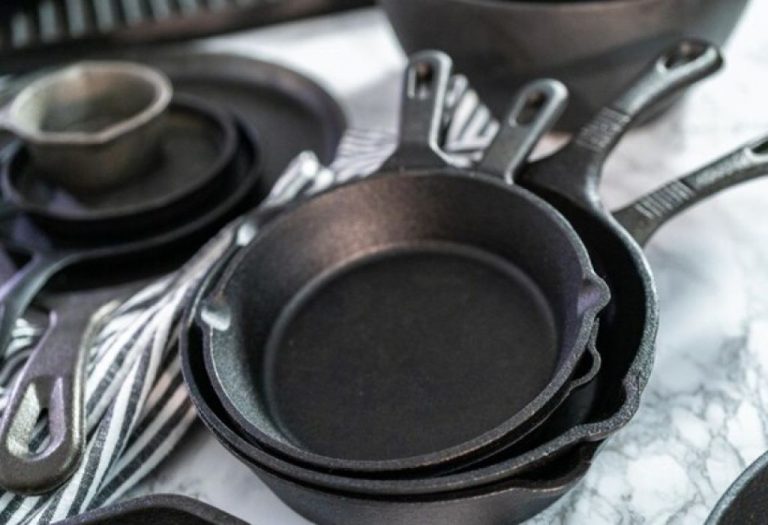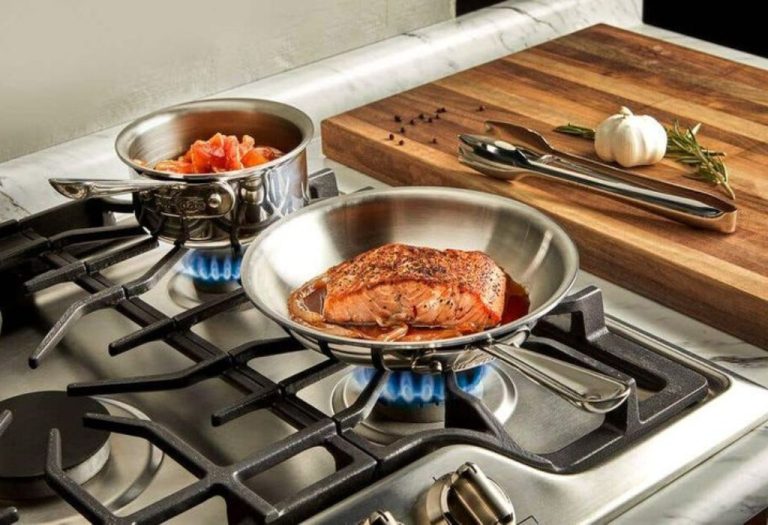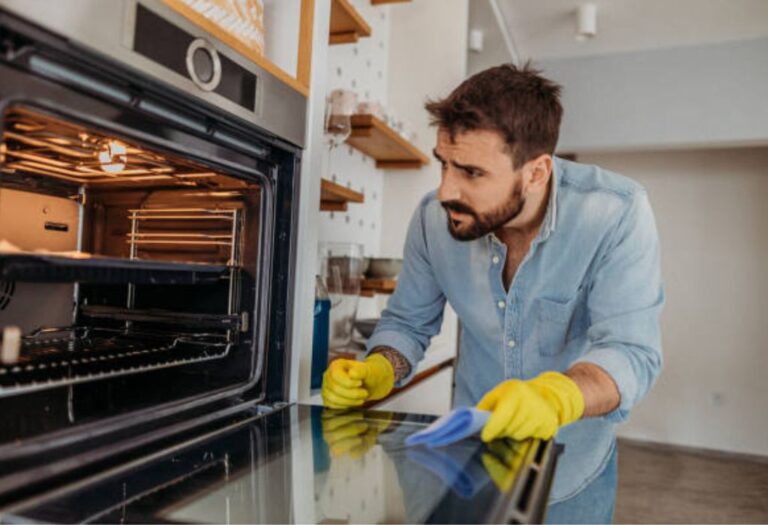The kitchen was packed with orders when it happened — a burst of flames shot up from the fryer, sending cooks scrambling. In seconds, the smell of burning oil filled the air.
According to the National Fire Protection Association (NFPA), nearly 49% of all restaurant fires begin in kitchens, with grease and oil among the top culprits. For a business, one fire can mean thousands in damages, weeks of closure, or even permanent shutdown.
Commercial kitchen fire safety is not just about compliance — it’s about protecting lives, property, and livelihoods. By understanding the risks and taking preventive steps, restaurant owners can dramatically reduce the chance of a fire.
In this guide, you’ll learn the most common fire hazards in commercial kitchens, essential prevention measures, must-have equipment, and step-by-step emergency response plans to keep your team and customers safe.
Why Fire Safety in Commercial Kitchens Matters
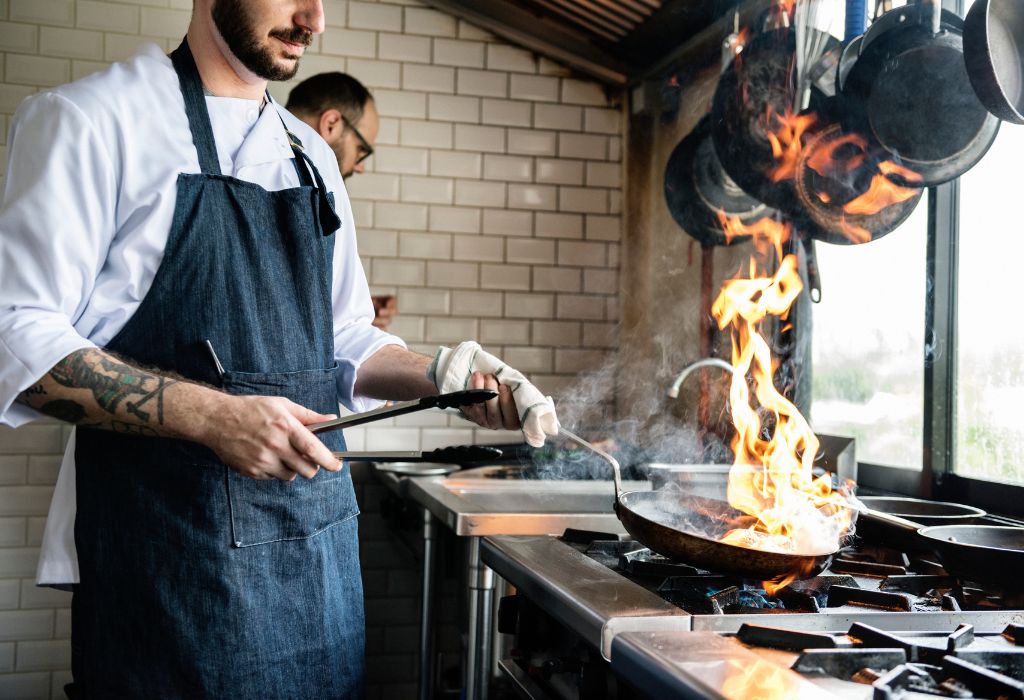
A busy commercial kitchen is a perfect storm for fire hazards. Hot oil, open flames, and constant movement create an environment where one mistake can lead to disaster.
The NFPA reports that nearly 49% of all restaurant fires start in the kitchen. Many are caused by simple oversights like leaving a pan unattended or failing to clean grease buildup.
Fires in restaurants cost millions in property damage each year. More importantly, they put staff and customers at serious risk.
A single incident can result in injuries, lost income, insurance battles, and even permanent closure. Fire safety is not just about following the law — it’s about protecting people and livelihoods.
Common Causes of Commercial Kitchen Fires
Even well-run kitchens have risks. Understanding the most common causes is the first step toward prevention.
Cooking Oil and Grease Buildup
Grease is one of the most dangerous fire fuels. It ignites easily and spreads fast.
Neglected exhaust hoods and ducts can accumulate layers of grease, turning them into fire hazards.
Unattended Cooking Equipment
A fryer or oven left running for even a few minutes can lead to disaster. Many commercial kitchen fires start when staff step away to handle other tasks.
Electrical Faults
Faulty wiring, overloaded outlets, and damaged appliance cords can all cause sparks. In a kitchen full of flammable materials, that’s a recipe for trouble.
Flammable Materials Near Heat Sources
Paper towels, packaging, and cleaning cloths stored near stoves can ignite instantly. Poor workstation organization makes this risk higher.
Essential Fire Prevention Measures
The most effective way to deal with a kitchen fire is to stop it before it starts.
Regular Cleaning and Maintenance
- Clean exhaust hoods and ducts at least once a month.
- Empty grease traps daily.
- Wipe down cooking surfaces after every shift.
Safe Cooking Practices
- Monitor oil temperature carefully.
- Turn pot and pan handles inward to avoid accidental spills.
- Never leave cooking equipment unattended.
Proper Equipment Storage
- Keep flammable items away from open flames and hot surfaces.
- Store cleaning supplies in a separate, ventilated area.
Fire Safety Equipment Every Commercial Kitchen Needs
Class K Fire Extinguishers
These are designed specifically for grease and oil fires. Place them within easy reach of all cooking stations.
Automatic Fire Suppression Systems
A wet chemical suppression system activates automatically when high heat is detected. This is a requirement under NFPA standards for many commercial kitchens.
Smoke Detectors and Alarms
Install smoke detectors in areas where heat and smoke can be detected early. Test them monthly to ensure they work properly.
Staff Fire Safety Training
Equipment alone won’t stop a fire — trained staff will.
Initial Fire Safety Orientation
All new hires should receive fire safety training on their first day. Cover how to use extinguishers, handle grease safely, and shut off gas lines.
Fire Drills and Response Practice
Schedule drills quarterly to ensure everyone knows evacuation routes and emergency roles.
Handling Grease Fires Safely
Staff should know never to use water on grease fires. Instead, use a lid, baking soda, or a Class K extinguisher.
Emergency Response Plan for Kitchen Fires

A clear plan can prevent panic and save lives.
Step-by-Step Fire Response Protocol
- Alert all staff immediately.
- Shut down cooking equipment and cut off gas/electricity.
- Attempt to contain the fire if safe.
- Call emergency services.
- Evacuate staff and customers.
Communication and Chain of Command
Assign a fire response leader per shift who coordinates actions and ensures everyone’s safety.
Legal and Compliance Requirements
Commercial kitchens must follow strict fire safety regulations.
- OSHA Standards require clear exit routes and emergency training.
- NFPA Codes mandate fire suppression systems for certain cooking equipment.
- Local fire departments often require inspections every 6–12 months.
Failure to comply can lead to fines, closure, or liability in case of an accident.
Creating a Fire Safety Culture
A culture of safety means every employee takes responsibility.
- Encourage reporting of hazards immediately.
- Reward staff who consistently follow safety rules.
- Lead by example — management should follow the same safety procedures.
Commercial Kitchen Fire Safety Checklist
Daily
- Clean cooking surfaces and equipment.
- Empty grease traps.
- Ensure extinguishers are visible and accessible.
Weekly
- Inspect electrical cords and plugs.
- Review staff fire safety roles.
Monthly
- Test smoke detectors and suppression systems.
- Conduct a short refresher drill.
FAQs – Commercial Kitchen Fire Safety
What is the number one cause of kitchen fires?
Grease buildup and oil-related fires are the leading cause in commercial kitchens.
How often should grease filters be cleaned?
At least once a week, but more often for high-volume kitchens.
What extinguisher type is best for commercial kitchens?
A Class K extinguisher is designed for cooking oil and grease fires.
Is a fire suppression system mandatory?
Yes, in most commercial kitchens with deep fryers and grills.
Can staff use water to put out grease fires
No, water spreads the flames — use a lid, baking soda, or Class K extinguisher.
Conclusion
Fires in commercial kitchens are fast, dangerous, and costly. But with proper prevention, the right equipment, and a well-trained team, they are also largely preventable.
Every shift should begin and end with safety in mind. By keeping fire hazards low and staff prepared, your kitchen can remain a place where the only thing that heats up is the food.
I’m Emma J. Caldwell, the founder, lead writer, and home-cooking enthusiast behind KitchenGuideCo.com. With a background in culinary arts and over a decade of cooking experience in both professional and personal kitchens, I created this platform to demystify recipes, offer smart kitchen gadget reviews, and guide readers through meal prep with confidence and clarity.
